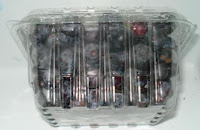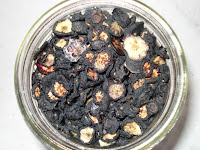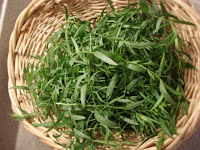Whether the berries are from a local farm or my own yard, the flavor of sweet blueberries, ripened in the July sun, is one of the ultimate tastes of summer. After picking as many as I can physically manage, I begin the process of preserving them, saving the flavor for many months to come.
Last week, I revisited Secor Farm in Wappinger's Falls to pick blueberries. I returned home with buckets full of berries ready to be preserved in three different forms: frozen for pancakes and muffins, dehydrated to create dried fruit for granola, and canned jams to spread on bagels and English muffins.
Freezing
Freezing is the simplest technique and perfect for berries that will be added to pancakes or muffins.
Freezing is the simplest technique and perfect for berries that will be added to pancakes or muffins.
I place the picked berries in a recycled berry container in the freezer overnight;
and repackage them in a zip lock bag for long term storage.
When added to pancakes throughout the year, their taste and consistency is close to that of fresh berries.
Dehydrating
Dehydrating blueberries is easy.
Dehydrating blueberries is easy.
The berries are simply cut in half to allow the moisture to escape; placed on trays in the dehydrator; dried at 135 degrees for 16 hours;
removed from the tray; and placed in canning jars, ready for granola.
The real benefit of dehydrating is that minimal storage space is required.
The real benefit of dehydrating is that minimal storage space is required.
Five pints of fresh blueberries can be stored in one 32 ounce jar when dehydrated.
Jam
To create jam, blueberries are boiled down for approximately 50 minutes using a 4:3 ratio of berries to sugar;
poured into warm, sterile jars; given a boiling water bath, and stored for up to a year.
(If you've never tried jam before, http://www.pickyourown.org offers illustrated, step-by-step directions.)
When the strong July sun is a distant memory, the sweet taste of the berries, in all its forms, will bring the magic of summer each morning.













































